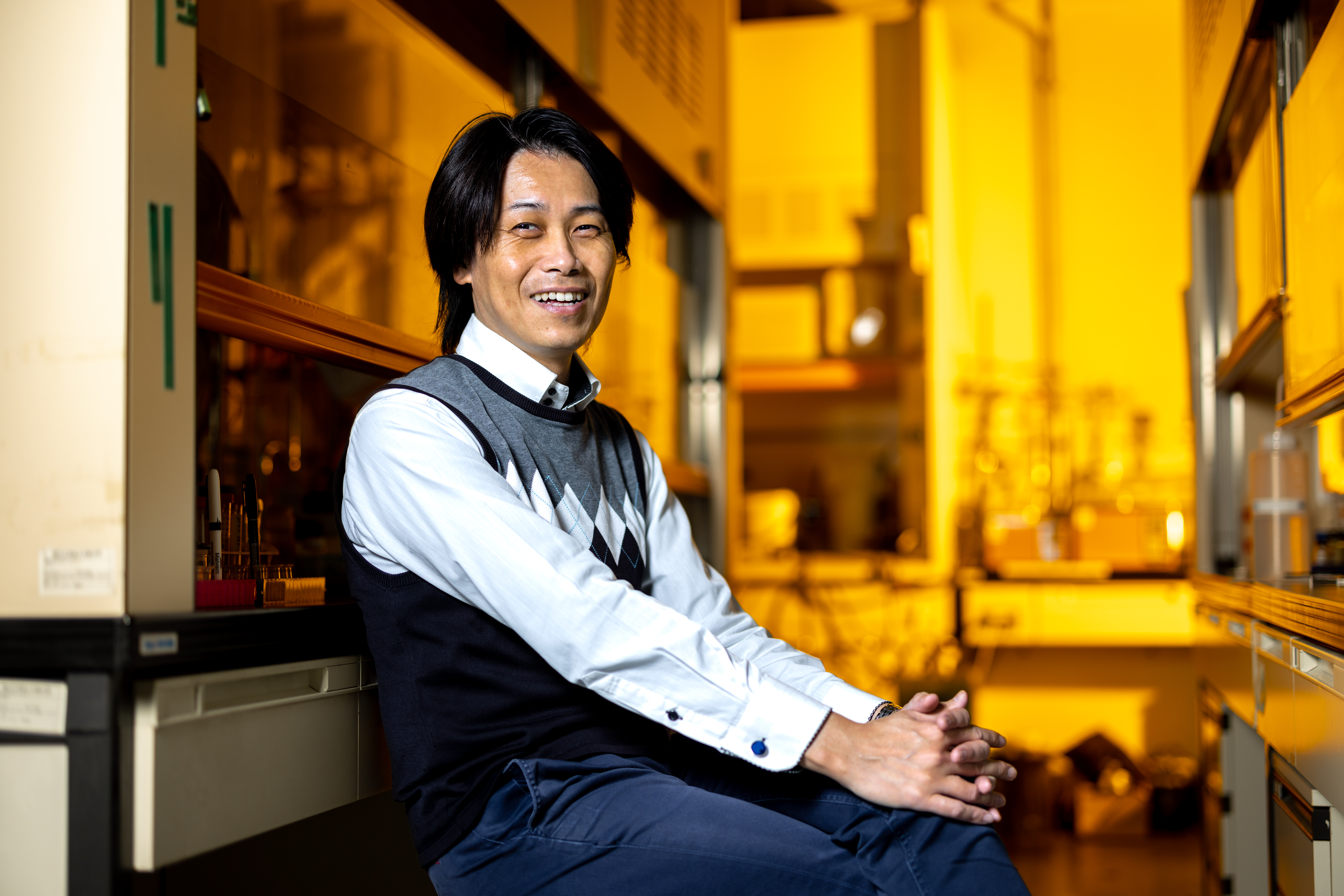
Professor Michiya Matsusaki, Graduate School of Engineering
"'Wagyu' It Yourself: Toward social implementation in theory from biomedical engineering to 3D-printed Wagyu beef"
In his recent work, Dr. Michiya Matsusaki of the Graduate School of Engineering, an expert in the field of biomaterial and biomedical engineering, showed engineered marbled Wagyu meat by using a newly developed 3D-bioprinting technique. The work has attracted a great deal of attention both domestically and internationally, and Dr. Matsusaki has made several media appearances since then. When asked by members of the media if they could try it, Dr. Matsusaki laughed and replied, "You can't eat it yet, so you’re going to have to wait. But everyone seems to be very interested in it."
Please tell us about your recent work on the 3D-bioprinting of marbled Wagyu beef. What is your next step?
I have been doing research on biomedical engineering for a long time and have created various three-dimensional microenvironments from artificial basement membranes to cardiac tissue. I've noticed that out of all the bioengineering and tissue regeneration research in the world, no one has ever regenerated or reproduced flesh as meat or muscle, at least until now. I thought that it would be possible to develop this new technology based on our expertise. This research progressed at a fast pace, but it was not done at our laboratory alone. With the help of the funding agency, we were able to increase the number of collaborative teams and expand development work into different areas of expertise, such as the printing industry.
After isolating and culturing cow-derived stem cells and differentiating them, muscle, fat, and blood vessel fibers were fabricated from the respective cells using new 3D printing technology. We assembled them to restructure the complex texture of real Wagyu meat. I believe this provides an environmentally friendly and sustainable method for producing cultured meat alternatives.
We are now working to achieve automation with various collaborators. Instead of simply showing off new technology and its potential significant impact, I'd like to expand this research to help society understand cultured meat and create a foundation for it to be adapted as food culture. In addition, I think that what I gained from this project can be applied to the biomedical engineering projects I was originally working on.
Why and when did you decide to become a researcher?
I’d been thinking about doing research as my profession since I was in junior high or high school. I also wanted to contribute to society in a medicine-related field. What made me start seriously thinking about becoming a researcher was one paper that I cited in my master’s thesis, a paper that was published around the year 1900. To think that someone like me in the 21st century still refers to a scientific discovery from the early 20th! That had a great impact on me. We all will eventually die, but research discoveries will remain forever. I thought this would serve as proof of my life.

What is your goal as researcher and what is the significance of international collaboration to you?
I don't want to do research for research's sake. I want to give back to society, since I am doing research supported by society. I cannot do everything up to the point of social implementation, but what I can do is show social implementation in theory. If I can do that, it will lead to people who can actually realize it. I consider this to be my contribution to society.
International collaboration is of course important to me. International collaboration and collaboration with other fields of expertise widen our possibilities, just like what happened in this project.
For more information:
The article, “Engineered whole cut meat-like tissue by the assembly of cell fibers using tendon-gel integrated bioprinting” was published in Nature Communications at DOI:
https://doi.org/10.1038/s41467-021-25236-9
https://resou.osaka-u.ac.jp/en/research/2021/20210824_4
https://researchmap.jp/read0093431?lang=e
Text: Mayumi Mochizuki/Edit: Christopher Bubb